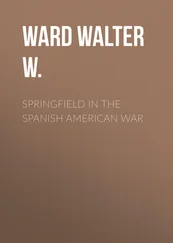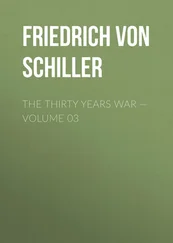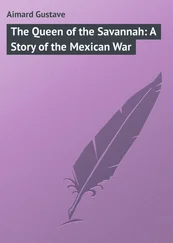Still, the General decided to move, for he knew the public demanded action; and he wished—as he said—to sustain the government. Indeed, he now declared it necessary to go forward immediately, “be the consequences what they may.” “I must attempt something,” he wrote privately. The government, however, had not requested him to support the administration or to incur such a risk; and Taylor—who stood conspicuous now in the Whig party, and suspected that “Polk, Marcy and Co.” were aiming to discredit and ruin him—can scarcely have felt a passionate desire to sustain them. In short, as may be inferred from his correspondence, he understood that he himself was the person chiefly blamed by the country for inactivity; and, assuming that no serious resistance would be encountered, he determined—primarily, it would appear, for his own sake—to occupy Monterey and Saltillo. For the head of an invading army, both the motive and the assumption were somewhat improper.6
He understood, however, that resistance might possibly be offered, and for that his plan seems to have been ready. As early as the middle of June there were at his disposal ten 18-pound siege guns, two 10-inch mortars and four 24-pound howitzers; and we know that at least the mortars and half a dozen of the 18-pounders were then at Fort Brown. Before July some of the howitzers were certainly at Point Isabel. It was entirely feasible to carry heavy ordnance to Monterey, for Santa Anna did a much harder job of the same kind; and Engineer Sanders had warned Taylor that field pieces would not be effective against the stone houses of Mexican towns. But, probably quite unaware how much the moral effect produced by his guns on May 8 had contributed to his victory the following day, he seems to have retained his low opinion of artillery. Even while Taylor was protesting against the number of volunteers thrown upon him, Ridgely complained bitterly that he could not get enough men for his battery. The cold steel—simple, direct, positive, unflinching—was a weapon such as Taylor could understand. One required no book learning to use that. And no doubt he already intended, as we know he intended later, to overcome resistance at Monterey, should any be offered, “pretty much with the bayonet.”7
Careful attention was paid to the choice of a route. That through Cadereita offered the better grazing; but the General wisely determined to march by way of Mier and Cerralvo, a distance believed to be 140 miles but in reality only about 125. This route was a little shorter and better provided with water. The roads were much more satisfactory. The problem of crossing the San Juan without boats or graded approaches did not present itself. The groves and ravines where an enemy could make trouble were few, and but one stream had to be forded. On August 19, therefore, Brevet Brigadier General Worth, commanding the Second Division of regulars, crossed the river with his first brigade over a bridge of steamboats, and moved off to establish a dépôt at Cerralvo, about sixty miles away. All the pack-mules, which were to return under escort and make a second trip, accompanied the troops. Brigadier General Persifor F. Smith and the second brigade, Brigadier General Twiggs with the First Division of regulars and about 180 wagons, and Major General W. O. Butler with a “Field Division” of volunteers followed. September 5 headquarters moved, and in a day or two the last of the men belonging to the expedition set out.8
The advance to Cerralvo did not prove entirely agreeable. At first there was trouble because the mules could not be loaded until after daybreak, and it was hard for the troops to march during the hot hours; but after a little experience the troops moved off at about three o’clock in the morning, and the train proceeded later under escort. The road proved to be full of sharp stones most of the way; and everything—even the frogs and the grass—had thorns, reported the soldiers. Although, as Worth said, there was no dangerous lack of water, the men suffered not a little during a part of the time. Some almost raved from thirst, and brushing the yellow scum aside, would drink eagerly from any pool. The heat baked them, and in spite of wet cotton in their caps a considerable number were overcome. Mier, the only town of any importance on the route, proved to be the roughest and gloomiest sort of a place. Gloomy, too, was the long line of wooden crosses beside the road, for every one marked a grave, and not a few signified a murder. After a while, however, came the inspiring sight of distant mountains—the fantastic, pale-blue summits of the Sierra Madre, which rose higher and stood out more boldly day by day; and the occasional inhabitants appeared, as Worth reported, “cordial in the highest degree.”9
Particularly sunny were the Mexican smiles at beautiful Cerralvo, where the advance arrived at noon, August 25; and there were still more substantial reasons for satisfaction. The town, a place of some 1800 people, was built of stone, and hence formed a strong military position. It had enough springs of excellent water to supply New York City, declared Taylor. Standing, all in white, on a ridge at the foot of a spur from the Sierra Madre, surrounded with groves, pastures and fields, it gave promise of abundance and kept the promise. Sheep, cattle and goats, watermelons, pecans, half a dozen delicious fruits, ample grazing, and large stores of corn were to be had, and plenty of oak, walnut, ebony, cypress and willow for the cooks’ fires. By the morning of September 15, with the exception of the Texas contingent, which had marched by way of China and Cadereita, all the troops concentrated here.10
Mexico, anticipating Taylor’s advance, had now taken steps to meet it. In July Paredes had sent three brigades of regulars from the capital to operate against the revolutionists of Guadalajara, and on August 6 these were ordered to Monterey. Ampudia, who was to supersede Mejía, received instructions to make haste; and the commander of the third brigade, on leaving San Luis Potosí, went so far as to destroy all baggage that could hinder the march. News of the revolution, which overtook these forces tardily, delayed the advance, for of course many of the officers felt they must “pronounce”; and almost the whole of one brigade, abandoning their general, went back to Mexico. The number deserting was quite serious, for besides the usual reasons for leaving a distasteful service, the troops were alarmed by the prospect of real fighting, and the sombre monotony of the deserts that had to be crossed disheartened them.11
But on August 29 the first brigade, about 1400 infantry with three 8-pounders, arrived at Monterey. The second came on September 6, and the third only a few days later. The garrison was now strong. Mejía had concentrated some 4000 regulars and auxiliaries, and according to the detailed official report there were in all, on September 10, 7303 officers and men. The arrival of the new forces greatly encouraged the soldiers of Palo Alto and the Resaca—who had felt little desire to meet the Americans again—and hence checked their deserting. As the cavalry had now been re-mounted, it seemed likely to be efficient; and when the Señorita Dosamantes, equipped as a captain, volunteered to fight the invader, and was exhibited on horseback to the entire army, its enthusiasm rose high.11
From the forced march of Ampudia and his troops one might infer that the government had positively decided to make a stand at Monterey, but such was by no means the fact. Before leaving Vera Cruz and again later Santa Anna warned both Salas and the minister of war emphatically against this idea, and on August 20 Ampudia was therefore notified that unless Mejía’s troops and the fortifications were certainly of sufficient strength to check the enemy, he should “on no account risk an action.” Three days later the department informed him that the general-in-chief was “convinced” that Monterey could not be defended, and that his forces were “not strong enough to resist the Americans”; and in view of this opinion he was directed to halt at Saltillo, and order Mejía by special express to demolish his fortifications, and remove his army and military effects to that city “without loss of time”—the purpose of the government being “to gather an army capable of winning a victory without risking the honor and great interests of the nation.”12
Читать дальше












